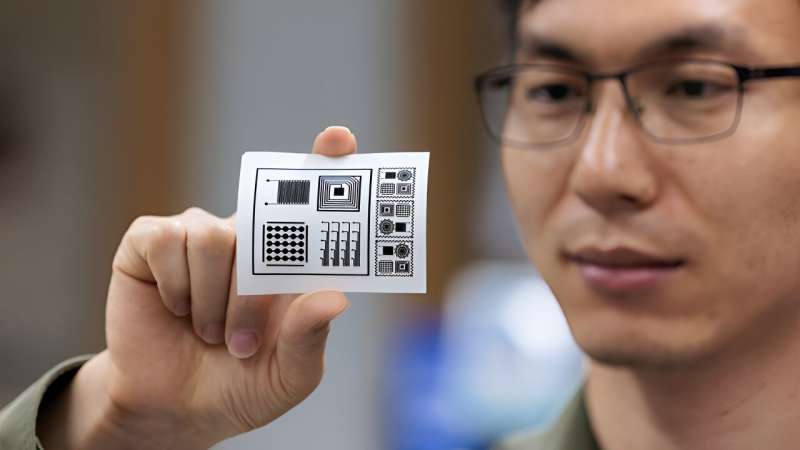This article has been reviewed according to Science X's editorial process and policies. Editors have highlighted the following attributes while ensuring the content's credibility:
fact-checked
peer-reviewed publication
trusted source
proofread
Scientists develop eco-friendly microfabrication method using water and paper

Imagine being able to create incredibly tiny structures with the same ease and sustainability as printing on paper. This is the frontier of microfabrication—the process of making microscopic structures that are crucial for the operation of everything from computer chips to medical devices.
Traditionally, microfabrication has been an intensive process that involves environmentally toxic chemicals that are difficult to safely dispose of. However, scientists at the University of Chicago are hoping to change that.
In their latest publication in Nature Sustainability, the laboratory of Prof. Bozhi Tian has developed an environmentally sustainable method of microfabrication that uses water and natural materials—including paper—to create and transfer patterns.
The process draws inspiration from nature—mimicking, for example, how geckos naturally stick and unstick from walls, according to Tian.
A new use for water
Traditional microfabrication, which creates tiny patterns on a microscopic scale using a process called photolithography, has long relied on harmful chemicals for manufacturing integrated circuits found in most home and consumer electronics.
However, UChicago investigators discovered a more eco-friendly approach to microfabrication by using water as a green activation agent instead of traditional toxic agents.
Their innovative technique is a new spin on an old process known as salt-assisted photochemical synthesis. The new version utilizes lasers to create patterns on paper, which can then be easily transferred using water.
"We discovered that water could gently and effectively separate the tiny patterns from their base materials," said Tian.
Using this technique, the team was able to improve the process of turning cellulose in paper into conductive carbon. They could then turn that carbon into advanced sensors by carefully adjusting the carbon's surfaces and using stimulators to efficiently boost reactions in nanoscale materials.
This valuable carbon, created through water and laser writing, has been shown to have diverse applications, ranging from advanced sensors to intricate medical devices.
Chuanwang Yang, a postdoctoral researcher with the Tian lab and first author of the paper, added, "Using water instead of toxic solvents is a major step forward."
Making the machine
To further enhance their method, Yang developed an innovative tool called a "Roll-to-roll Laser Writer." This device automates laser-based writing and pattern transfer, making the process faster and more dependable.
"It took about six months to design and build this machine, but it has significantly improved our fabrication speed for large-scale applications," said Yang.
While acknowledging their method may not replace the precise techniques needed for creating intricate computer chips, the researchers are optimistic about its use for other applications, such as affordable, disposable sensors for medical testing or wearable devices.
"We see this being particularly useful for devices that don't need the extreme precision of silicon chips but still require high functionality," said Tian.
Pengju Li, a graduate student with the Tian lab who also worked on the project, added, "Our design enhances the fabrication efficiency of ultrathin medical devices, including those used for cardiac and neural stimulation and sensing."
By tapping into nature's power and using simple, eco-friendly materials, the team's innovative method is poised to reshape the microfabrication process, contributing to the growing wave of green technology that is defining the future of the science-tech industry.
More information: Chuanwang Yang et al, A bioinspired permeable junction approach for sustainable device microfabrication, Nature Sustainability (2024). DOI: 10.1038/s41893-024-01389-5
















